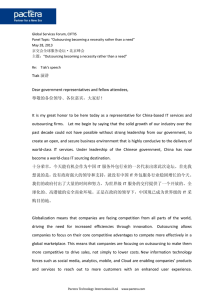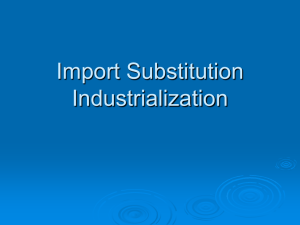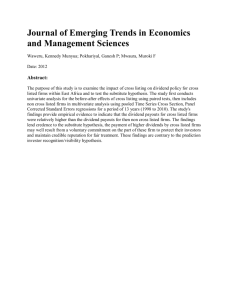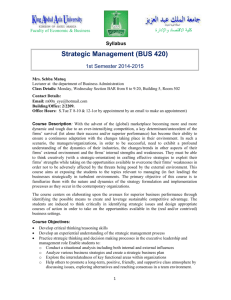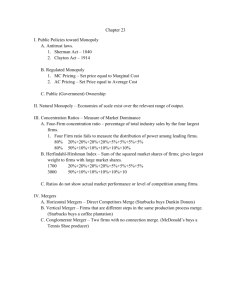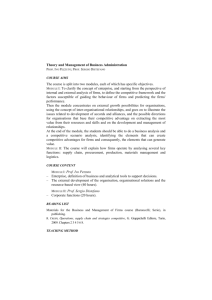Seven Practices of High Performance Organizations
advertisement
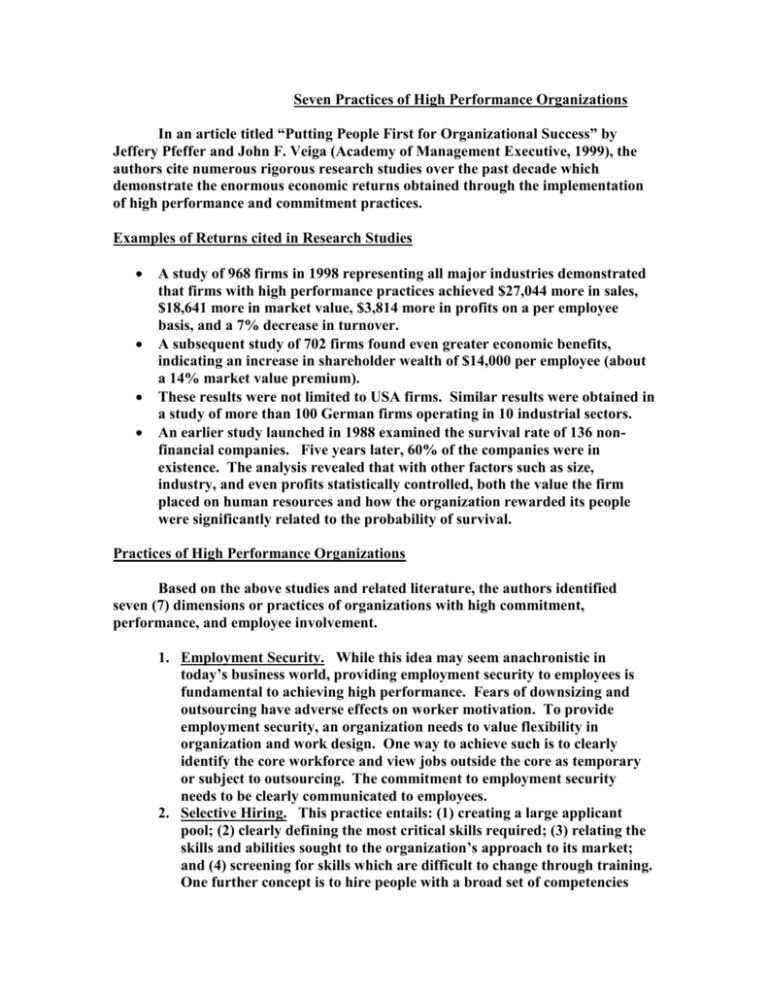
Seven Practices of High Performance Organizations In an article titled “Putting People First for Organizational Success” by Jeffery Pfeffer and John F. Veiga (Academy of Management Executive, 1999), the authors cite numerous rigorous research studies over the past decade which demonstrate the enormous economic returns obtained through the implementation of high performance and commitment practices. Examples of Returns cited in Research Studies A study of 968 firms in 1998 representing all major industries demonstrated that firms with high performance practices achieved $27,044 more in sales, $18,641 more in market value, $3,814 more in profits on a per employee basis, and a 7% decrease in turnover. A subsequent study of 702 firms found even greater economic benefits, indicating an increase in shareholder wealth of $14,000 per employee (about a 14% market value premium). These results were not limited to USA firms. Similar results were obtained in a study of more than 100 German firms operating in 10 industrial sectors. An earlier study launched in 1988 examined the survival rate of 136 nonfinancial companies. Five years later, 60% of the companies were in existence. The analysis revealed that with other factors such as size, industry, and even profits statistically controlled, both the value the firm placed on human resources and how the organization rewarded its people were significantly related to the probability of survival. Practices of High Performance Organizations Based on the above studies and related literature, the authors identified seven (7) dimensions or practices of organizations with high commitment, performance, and employee involvement. 1. Employment Security. While this idea may seem anachronistic in today’s business world, providing employment security to employees is fundamental to achieving high performance. Fears of downsizing and outsourcing have adverse effects on worker motivation. To provide employment security, an organization needs to value flexibility in organization and work design. One way to achieve such is to clearly identify the core workforce and view jobs outside the core as temporary or subject to outsourcing. The commitment to employment security needs to be clearly communicated to employees. 2. Selective Hiring. This practice entails: (1) creating a large applicant pool; (2) clearly defining the most critical skills required; (3) relating the skills and abilities sought to the organization’s approach to its market; and (4) screening for skills which are difficult to change through training. One further concept is to hire people with a broad set of competencies 3. 4. 5. 6. 7. which relate to a broad set of jobs, rather that a narrow set of skills for a single job. Organization Design characterized by Decentralization and Team Management. Decentralization facilitates empowerment of teams. Clearly, for teams to be effective, its members need to function effectively across task, process, and relationship levels of group activity; continuous team building is critical. Comparatively High Compensation contingent on Organizational Performance. High compensation is not a consequence of organizational success, but its progenitor. Contingent compensation is essential in most high performance systems; it can take many different forms. The key is designing a system consistent with the firm’s business strategy. Extensive Training. Training employees to strengthen their performance is not a frill, but is critical to sustaining performance in a competitive world when technology is ever changing. It can be a source of competitive advantage. Therefore, it viewed as an investment, but like all investments, it must be made prudently to insure that the benefits of training outweigh its costs. Reduction of Status Differences. High performance organizations endeavor to eliminate status differences in the workplace, so employees believe they are valued and treated equally. Thus, a firm can more fully tap the ideas, skill, and energy of its people. Sharing Information. Information sharing is an essential component of high performance systems. Such information includes the firm’s business strategy, its financial performance, and operational changes. Such an open-book management practice conveys to people that they are valued and trusted. Further Observations from the Research 1. 2. 3. 4. 5. Managers are enslaved by short-term pressures and interests. Organizations tend to suppress or destroy competence. Managers don’t delegate enough. Perverse Norms persist about what constitutes good management. Only a One-in-Eight chance of success because of piecemeal interventions to change the work culture and philosophy. Prepared by Steven J. Mayer (OSU/2004)









